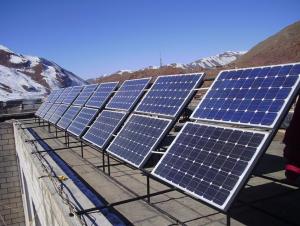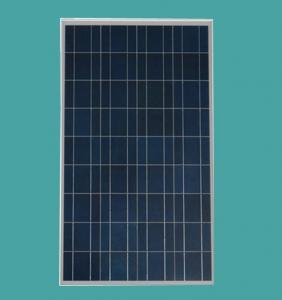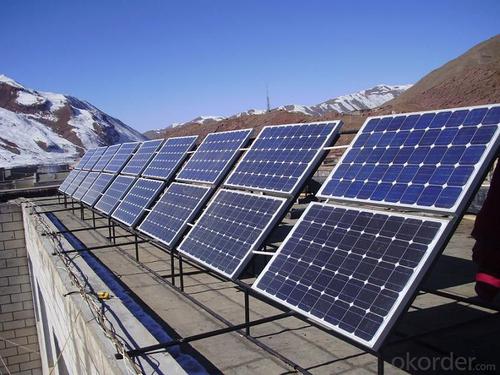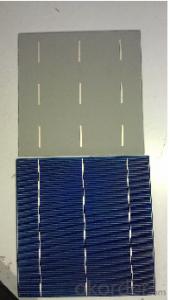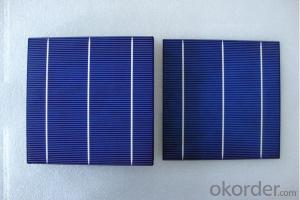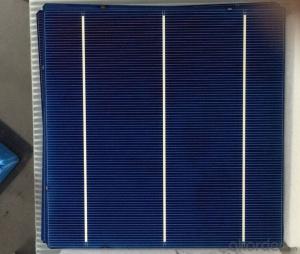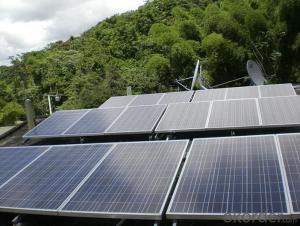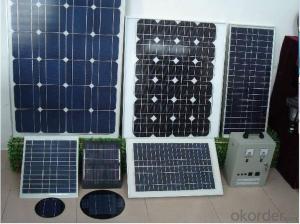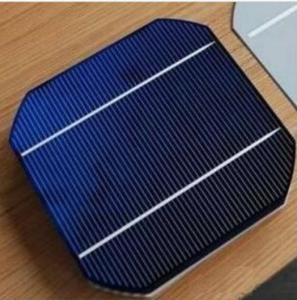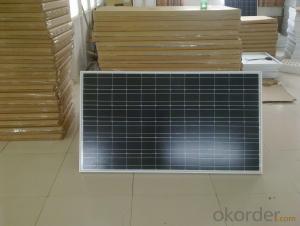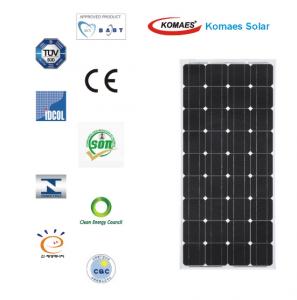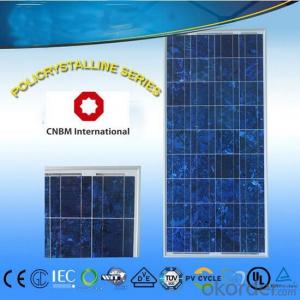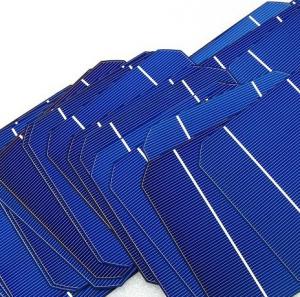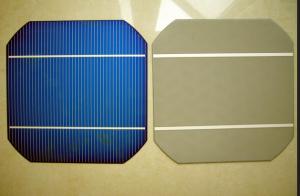Solar Cells Amazon - Monocrystalline Solar Cells for Solar Panels Energy Product System with TUV, MCS Certificate
- Loading Port:
- Tianjin
- Payment Terms:
- TT or LC
- Min Order Qty:
- 10 m²
- Supply Capability:
- 1000 m²/month
OKorder Service Pledge
OKorder Financial Service
You Might Also Like
Specifications
1.Solar panel energy system power from 165W-195W
2.100% TUV standard flash test
3.Certificate:TUV,UL,MCS
4.Quality Insurance
100% TUV standard flash test mono solar panel energy product system
1.What is 100% TUV standard flash test?
Flash test machine with TUV standard reference solar panel,all Propsolar Panel is tested with 100% TUV standard or standard higher than TUV standard
In the market,not all solar panel is real tested with TUV standard,Flash machine reference panel is not TUV standard,so the power is 2%-3% less than TUV standard.
2.Solar Panel Warranty
1)10 years limited manufacturing warranty
2)12 years for 90% of warranted minimum power
3)25 years for 80% of warranted minimum power
3.Solar Panel Electric Characteristics
CELL TYPE | 125 X 125 MONO SOLAR CELL | ||||||
ITEM | PS-M572165 | PS-M572170 | PS-M572175 | PS-M572180 | PS-M572185 | PS-M572190 | PS-M572195 |
Maximum Power(Wp) | 169.9 | 174.9 | 179.9 | 184.9 | 189.9 | 194.9 | 199.9 |
Open circuit Voltage (Voc) | 43.3 | 43.7 | 44.0 | 44.5 | 44.9 | 45.2 | 45.5 |
Short circuit Current (Isc) | 5.05 | 5.25 | 5.40 | 5.45 | 5.55 | 5.60 | 5.80 |
Maximum Power Voltage (Vm) | 35.3 | 35.5 | 35.6 | 36.0 | 36.3 | 36.5 | 36.7 |
Maximum Power Current (Im) | 4.67 | 4.79 | 4.92 | 5.00 | 5.10 | 5.21 | 5.31 |
Cell Efficiency [%] | 15.85 | 16.33 | 16.81 | 17.28 | 17.77 | 18.25 | 18.74 |
Module Efficiency [%] | 12.88 | 13.27 | 13.66 | 14.05 | 14.44 | 14.83 | 15.22 |
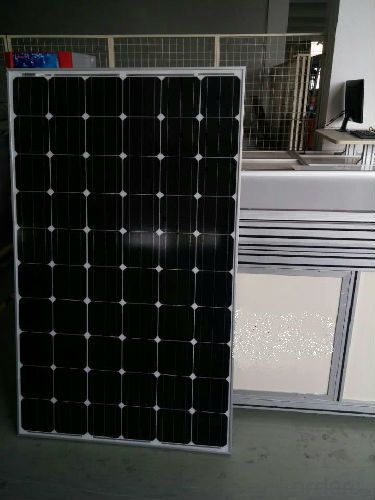
More Details:
Depending on construction, photovoltaic modules can produce electricity from a range of frequencies of light, but usually cannot cover the entire solar range (specifically, ultraviolet, infrared and low or diffused light). Hence, much of the incident sunlight energy is wasted by solar modules, and they can give far higher efficiencies if illuminated with monochromatic light. Therefore, another design concept is to split the light into different wavelength ranges and direct the beams onto different cells tuned to those ranges.[citation needed] This has been projected to be capable of raising efficiency by 50%. Scientists from Spectrolab, a subsidiary of Boeing, have reported development of multijunction solar cells with an efficiency of more than 40%, a new world record for solar photovoltaic cells.[3] The Spectrolab scientists also predict that concentrator solar cells could achieve efficiencies of more than 45% or even 50% in the future, with theoretical efficiencies being about 58% in cells with more than three junctions.
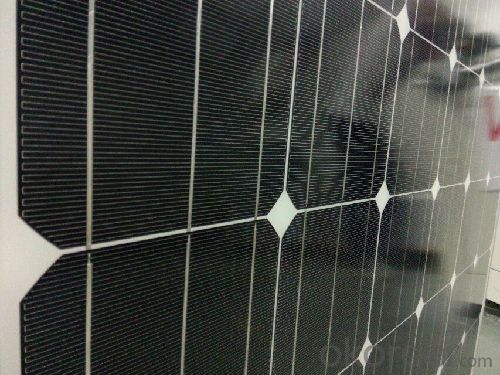
The life of the solar panels is determined by the Solar Energy Solar Cells, tempered glass, EVA, TPT and other materials, usually with better materials manufacturers panels made out of life can reach 25 years, but with the impact on the environment, solar cell board materials will change with time and aging. Normally used in 20 years of power will decay by 30%, it will be used in 25-year power attenuation of 70%.
Inspection and Maintenance of Solar Energy Solar Cells:
1. Check whether the damaged Solar Energy Solar Cells, to be promptly found and replaced.
2. Check the battery cables and the ground plate is good contact, without loss phenomenon.
3. Check the wiring at the combiner box if there is fever phenomenon.
4. Check the battery plate bracket loose and breakage.
5. Cleaning up around the panels shielding panels weeds.
6. Check whether the panel surface coverings.
7. Check the battery guano on the plate surface, and clean it if necessary.
8. The cleanliness of the panels were identified.
9. Windy weather to deal with solar panels and frame to conduct audits.
10. Snow days to respond in a timely manner to clean up the panel, the panel surface to avoid the frozen snow.
11. Heavy rain should check all waterproof seal is good, whether the water leakage.
12. Check if there are animals into the power station to the battery plate damage.
13. Hail response panel surface to conduct audits.
14. The battery plate temperature is detected, and the ambient temperature is compared for analysis.
15. Check it out on the issues to be addressed promptly analyzed and summarized.
16. To do detailed records of each inspection, in order to analyze later.
17. Summary records for analysis and archiving.
- Q: How do solar cells perform in areas with high levels of air pollutants?
- Solar cells generally perform less efficiently in areas with high levels of air pollutants. Air pollutants, such as smog, dust, and particulate matter, can accumulate on the surface of solar panels, reducing their ability to absorb sunlight. This buildup of pollutants creates a barrier between the sun and the solar cells, decreasing their overall performance and energy production. Additionally, air pollutants can also block and scatter sunlight, further diminishing the amount of sunlight reaching the solar cells. Therefore, in areas with high levels of air pollutants, regular cleaning and maintenance of solar panels are necessary to ensure optimal performance.
- Q: How do solar cells impact water resources?
- Solar cells have a positive impact on water resources as they do not require water for their operation, unlike traditional power plants that heavily rely on water for cooling purposes. This reduces the strain on water resources and helps in conserving them for other essential needs.
- Q: What are the advantages and disadvantages of solar panels and diodes?
- In the normal power supply when the diode reverse bias; only when the power reverse, the diode is biased conduction, then the diode will be short circuit after the class, and then avoid the negative voltage damage after the circuit
- Q: Can solar cells be used in commercial applications?
- Yes, solar cells can be used in commercial applications. They are commonly deployed in various sectors such as residential, industrial, and agricultural settings to generate electricity from sunlight. Many commercial buildings, factories, and even solar farms utilize solar cells to harness renewable energy and reduce reliance on traditional power sources.
- Q: How do solar cells affect the electricity grid?
- Solar cells have a positive impact on the electricity grid by reducing the overall demand for electricity from traditional power sources. By generating clean and renewable energy, solar cells contribute to a more sustainable and resilient grid. They help to lower greenhouse gas emissions, decrease dependence on fossil fuels, and promote a decentralized energy system. However, their intermittent nature can pose challenges for grid stability and require the integration of energy storage technologies.
- Q: Can solar cells be used in commercial buildings?
- Yes, solar cells can be used in commercial buildings. In fact, many commercial buildings worldwide are increasingly incorporating solar panels to generate renewable energy and reduce their reliance on traditional power sources. This not only helps businesses save on electricity costs but also contributes to a more sustainable and environmentally friendly operation.
- Q: Can solar cells be used to power electric gates?
- Yes, solar cells can be used to power electric gates. Solar panels can capture sunlight and convert it into electricity, which can then be used to power various devices, including electric gates. This renewable energy source provides a sustainable and cost-effective solution for powering electric gates in areas where electricity supply is limited or unavailable.
- Q: Where can I buy solar cells?
- Why do you want to buy solar cells?
- Q: What is the role of solar cells in powering water pumping systems?
- Solar cells play a crucial role in powering water pumping systems by converting sunlight into electricity, which is then used to run the pumps. This renewable energy source eliminates the need for traditional fuel sources and provides a sustainable and cost-effective solution, especially in remote or off-grid areas where access to electricity is limited.
- Q: Can solar cells be used for powering remote military installations?
- Yes, solar cells can be used for powering remote military installations. Solar power systems provide a reliable and sustainable source of energy, making them an ideal solution for remote locations where access to traditional power grids may be limited or unavailable. Solar cells can efficiently convert sunlight into electricity, providing a consistent power supply to support the energy needs of military bases, communication systems, surveillance equipment, and other critical infrastructure in remote areas. Additionally, solar power reduces reliance on fossil fuels, enhances operational flexibility, and promotes environmental sustainability in military operations.
Send your message to us
Solar Cells Amazon - Monocrystalline Solar Cells for Solar Panels Energy Product System with TUV, MCS Certificate
- Loading Port:
- Tianjin
- Payment Terms:
- TT or LC
- Min Order Qty:
- 10 m²
- Supply Capability:
- 1000 m²/month
OKorder Service Pledge
OKorder Financial Service
Similar products
Hot products
Hot Searches
Related keywords
